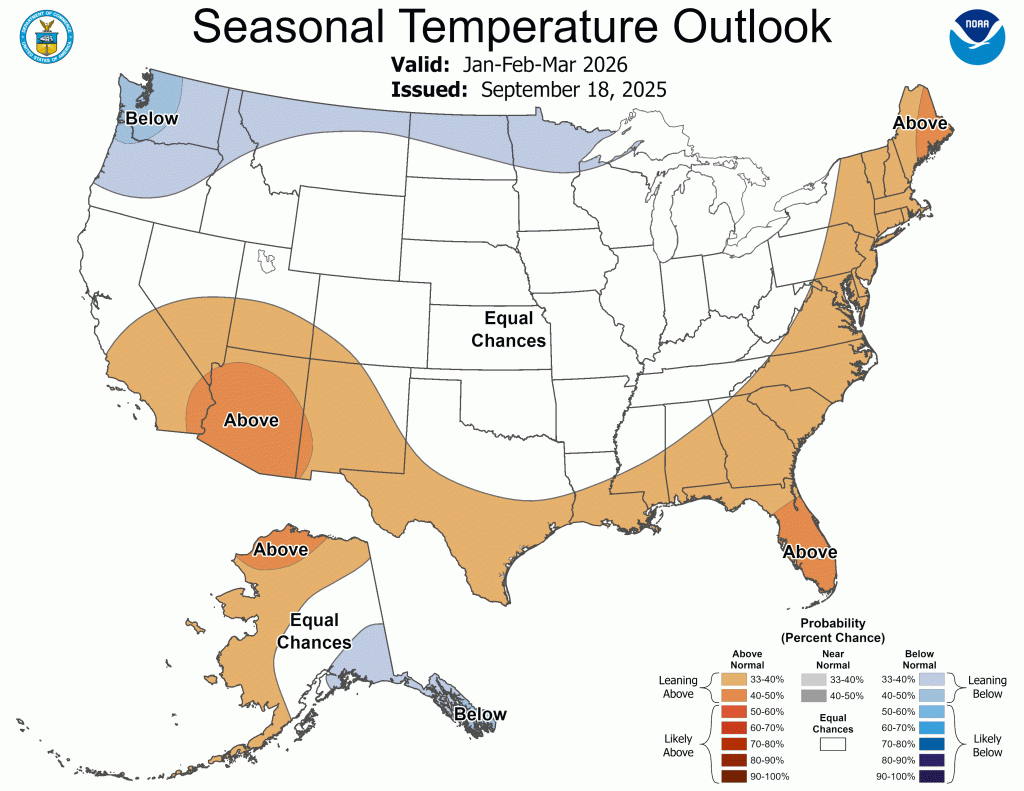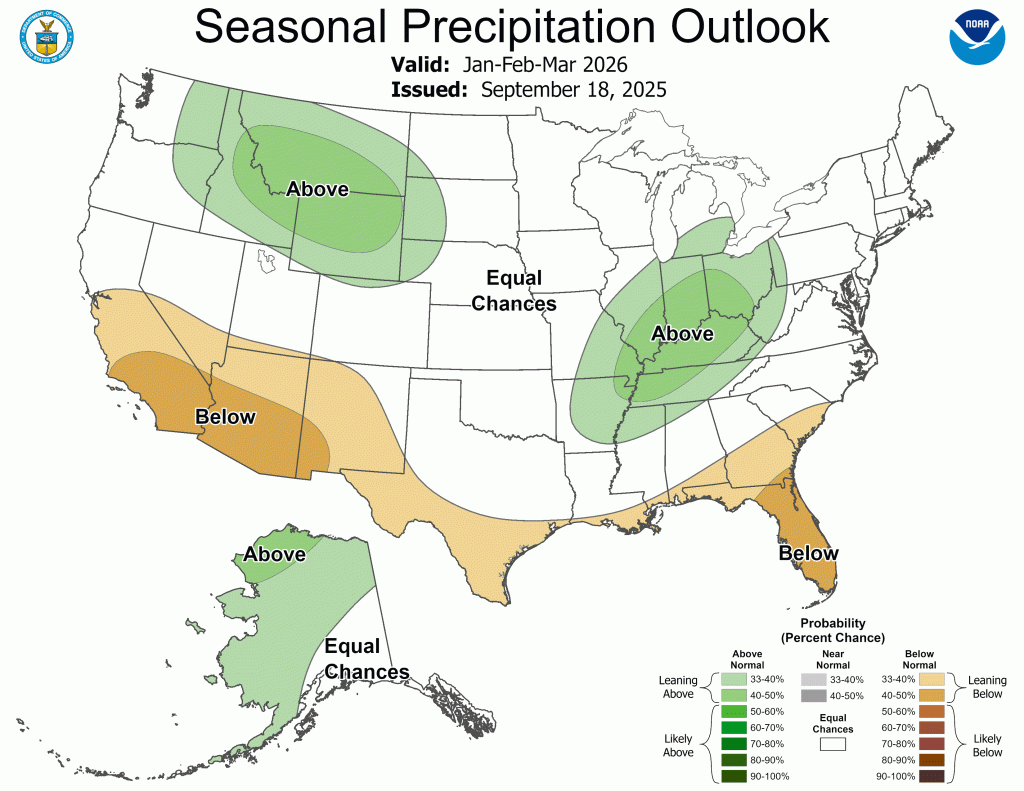
Elias Weiss

Audio By Carbonatix
In Arizona, any temperature drop is almost always welcome. And while this fall may provide little opportunity for jackets, hats and scarves, cooler temperatures in the first few months of 2026 will finally give way to the clement sunshine snowbirds flock to.
Still, by Arizona standards, that winter — that is, January through March — is forecasted to be a bit warmer and a bit drier than usual. Fall may be off to a rainy start, but the National Weather Service’s Climate Prediction Center predicts the Valley will see warmer-than-usual temperatures and drier-than-usual precipitation this winter.

National Weather Service
For valley residents, the first three months of the year are typically the coolest it gets. The average temperature over the past 15 years is 53 degrees for January and 60 degrees for February, with March heating up to an average of 70 degrees. Those milder months are what make living in the desert worthwhile, presenting a perfect opportunity to check out hiking trails, botanical gardens and historical landmarks.
When news happens, Phoenix New Times is there —
Your support strengthens our coverage.
We’re aiming to raise $30,000 by December 31, so we can continue covering what matters most to you. If New Times matters to you, please take action and contribute today, so when news happens, our reporters can be there.
It’ll likely be dry, though. Perhaps not as dry as last winter, which saw a nearly record-breaking rainless streak, but Phoenix is likely to see less rainfall than normal. Though normal might be more than you realize.
“We do see a decent amount of the annual rainfall in the winter months,” said NWS meteorologist Sean Benedict. “The combined totals (of rainfall) from December through March are higher than the total rainfall from the monsoon season.”

National Weather Service
From January to March, Phoenix typically sees around 2.57 inches of precipitation. Last year, the first two months saw barely any rainfall until March showered the Valley with less than an inch of rain.
The Climate Prediction Center has noted a shift in ocean surface temperatures this month that likely means we’ll have a weak La Niña year. This brings warmer winter temperatures and tends to lead to drought in the southern United States, according to the National Oceanic and Atmospheric Administration.
The Old Farmer’s Almanac also projects that La Niña’s shift in the Pacific “is transitioning to neutral conditions, shifting the jet stream and storm tracks across North America.” The publication is also predicting a warmer, drier winter in Phoenix and Southern Arizona.